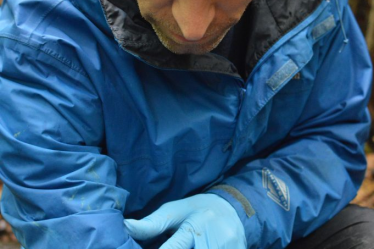Jonathan Logan
Science & Environment Editor
One of Elon Musk’s newest endeavors involves beaming high-speed internet to the entire world. The project, known as Starlink, requires SpaceX (Musk’s flagship company) to launch over 10,000 small satellites into Low Earth Orbit (LEO). The official Starlink website states that the project should “rapidly expand to near global coverage of the populated world by 2021.” While this is certainly not the most technically challenging project SpaceX has embarked on, it is one of the most financially risky and disruptive.
A CNBC: Markets article cited SpaceX President Gwynne Shotwell in saying that the mega-constellation (as it has come to be known) will cost upwards of $10 billion. Financial analysts believe that, if Starlink is successful, “SpaceX’s valuation could reach as high as $175 billion.” The motivation behind Starlink is not necessarily to make the internet more equitable and accessible. On the contrary, Elon Musk has stated publicly that the global internet project will fund his quest to colonize Mars. Since 2018, when the first batch of 60 Starlinks were launched, astronomy and astrophysics have been totally disrupted. Astronomical observations made by ground-based telescopes have been capturing these ugly, bright streaks slashing across the sky. The small satellites reflect a lot of light – enough to be seen clearly with the naked eye; not to mention a powerful telescope in the Atacama Desert.
Initially, SpaceX responded well to the legitimate complaints from academics and the everyday stargazer, according to an article published in Scientific American by Emily Zhang — an astrophysics major at Columbia University. They prototyped and launched a satellite with an anti-reflective coating in early 2020. The satellite, dubbed “DarkSat,” reflected about half of all incident sunlight. Astronomers recognized the DarkSat as a step in the right direction, but the chains of DarkSats remain highly visible in exposures taken by Earth-based telescopes. Monthly launches have continued to send dozens of the Starlink satellites into LEO.
On the other hand, some scientists continue to politely nudge SpaceX in hopes that they will engineer a solution. This August, an assembly of scientists and satellite experts alike gathered at the virtual Satellite Constellation 1 (SATCON 1) workshop “to provide recommendations for both astronomers and satellite constellation operators (SpaceX) in order to minimize further disruptions.” SATCON 1 resulted in an official report detailing what many believed to be a growing corporate-academic divide. The report stated that the effect of Starlink on “the human experience of the night sky range from ‘negligible to extreme.’” While the typical stargazer might land on the “negligible” side of the spectrum, the scientific endeavors of astronomers and academics all across the globe will become very hard if SpaceX goes through with the launch of an additional 11,000 small satellites.
The future seems bleak for Earth-based observations even after the DarkSats were launched. Jonathan McDowell, an astronomer at the Center for Astrophysics at Harvard University, believes that the DarkSat is the end of the road; that SpaceX’s ingenuity has been maximized and nothing further can be done. While he was impressed by the DarkSat, McDowell stated that if the mega-constellation did go operational with all 12,000 Starlink satellites, the impact on astronomical research would be irreversible, he communicated to Scientific American. These fears seem to be well-founded as Sir Richard Branson recently decided to join in the billionaire sat-bash, backing OneWeb to compete with Starlink. However, OneWeb bankrupted. It was then acquired by the British government who saw the merits in the program. The battle for LEO is three-dimensional: scientific, corporate and governmental.
Over the COVID-19 shutdown, SpaceX decided to go at the brightness issue one more time. They engineered a satellite that uses a black sunshade to mitigate reflection — essentially a satellite with SPF 10,000 sunscreen. They dubbed these satellites VisorSat and launched a batch early this summer to be tested by astronomers once observatories reopen. Additionally, some experts have suggested putting the satellites into lower orbits. This would decrease the angle between satellites and the Earth, reducing the time they spend in sunlight. However, this would also cause satellite orbits to decay faster, along with corporate patience. In the meantime, scientists are happy to see SpaceX making an effort to resolve the dilemma.

